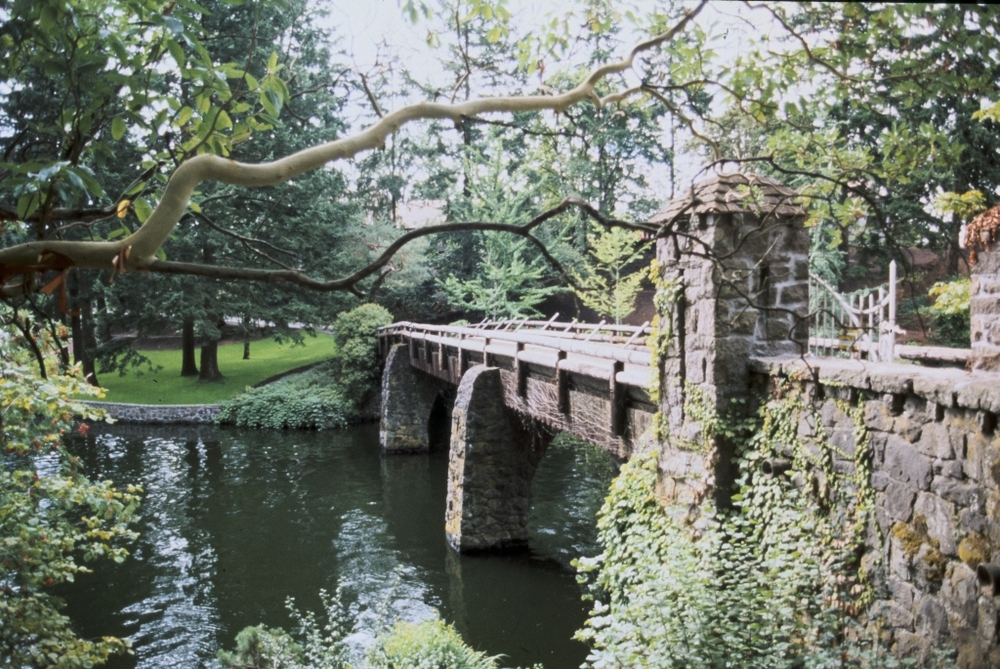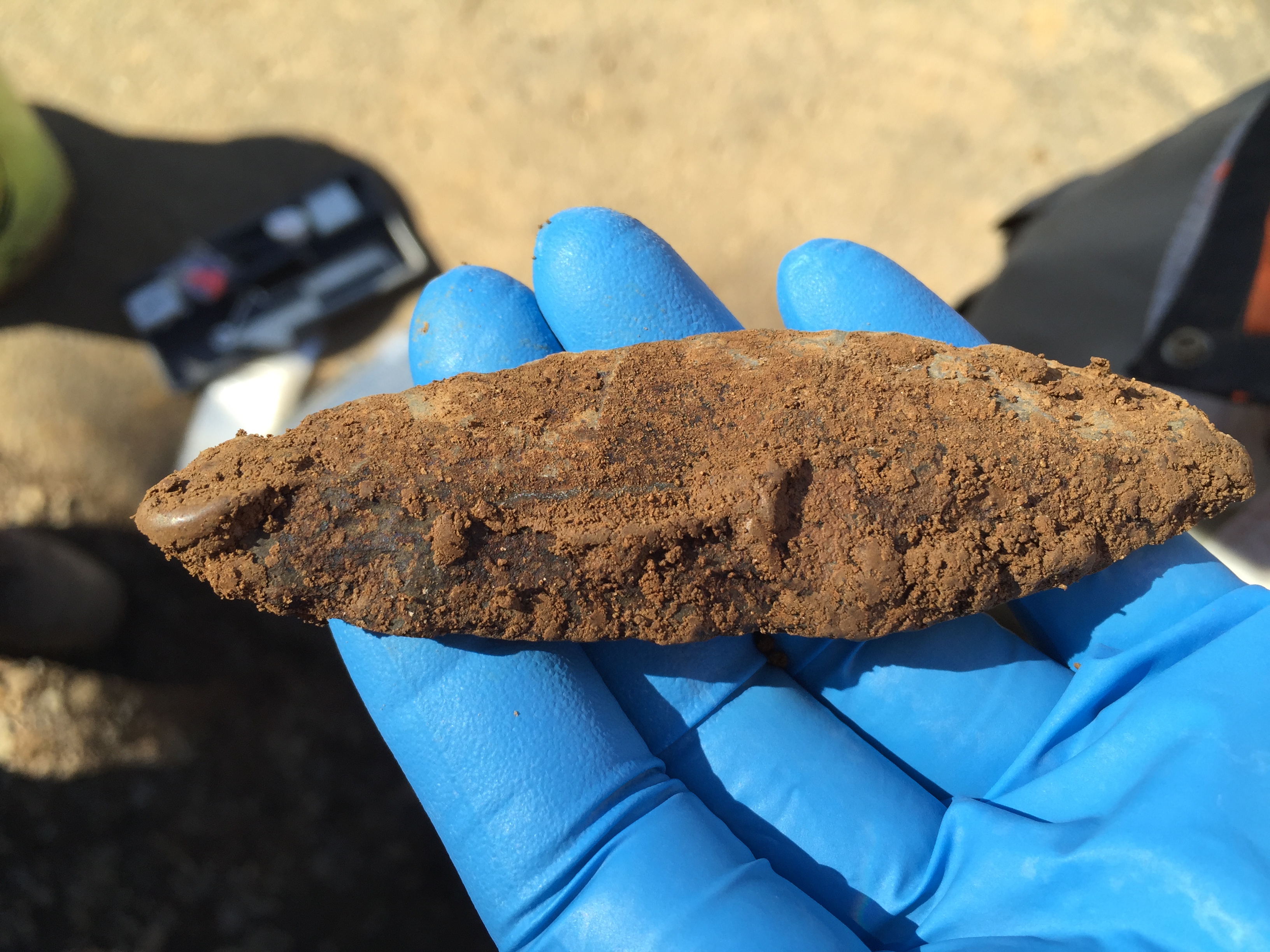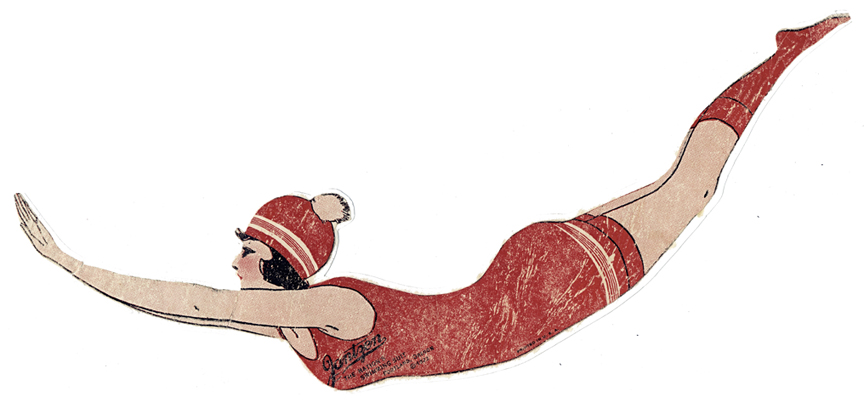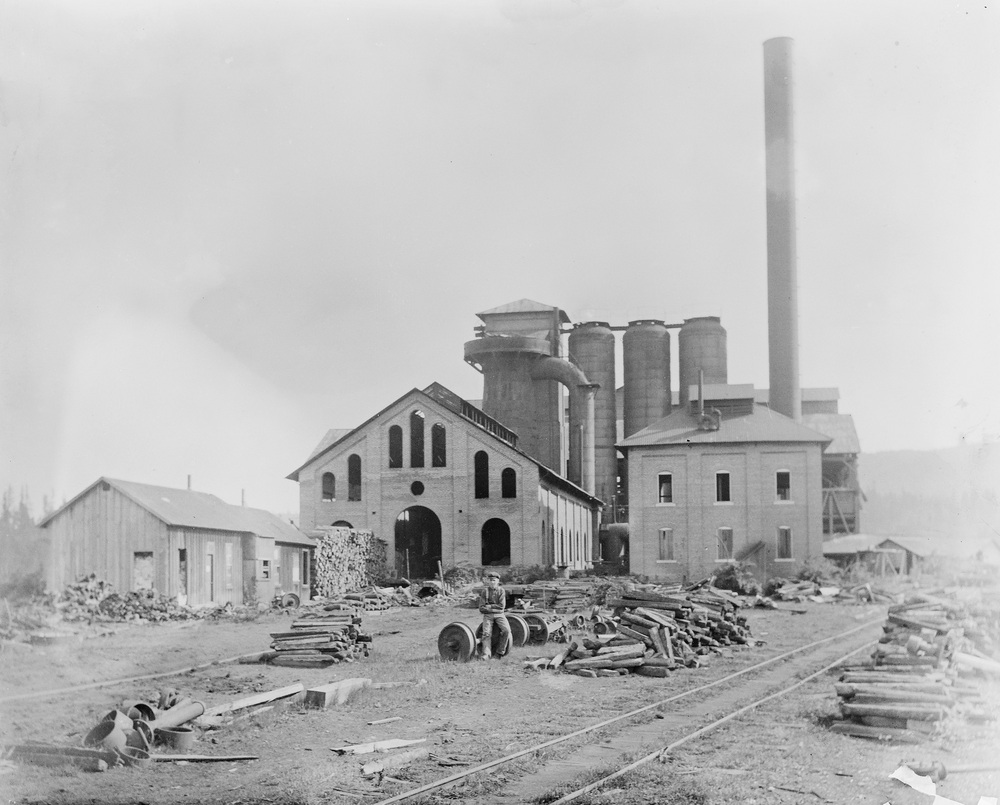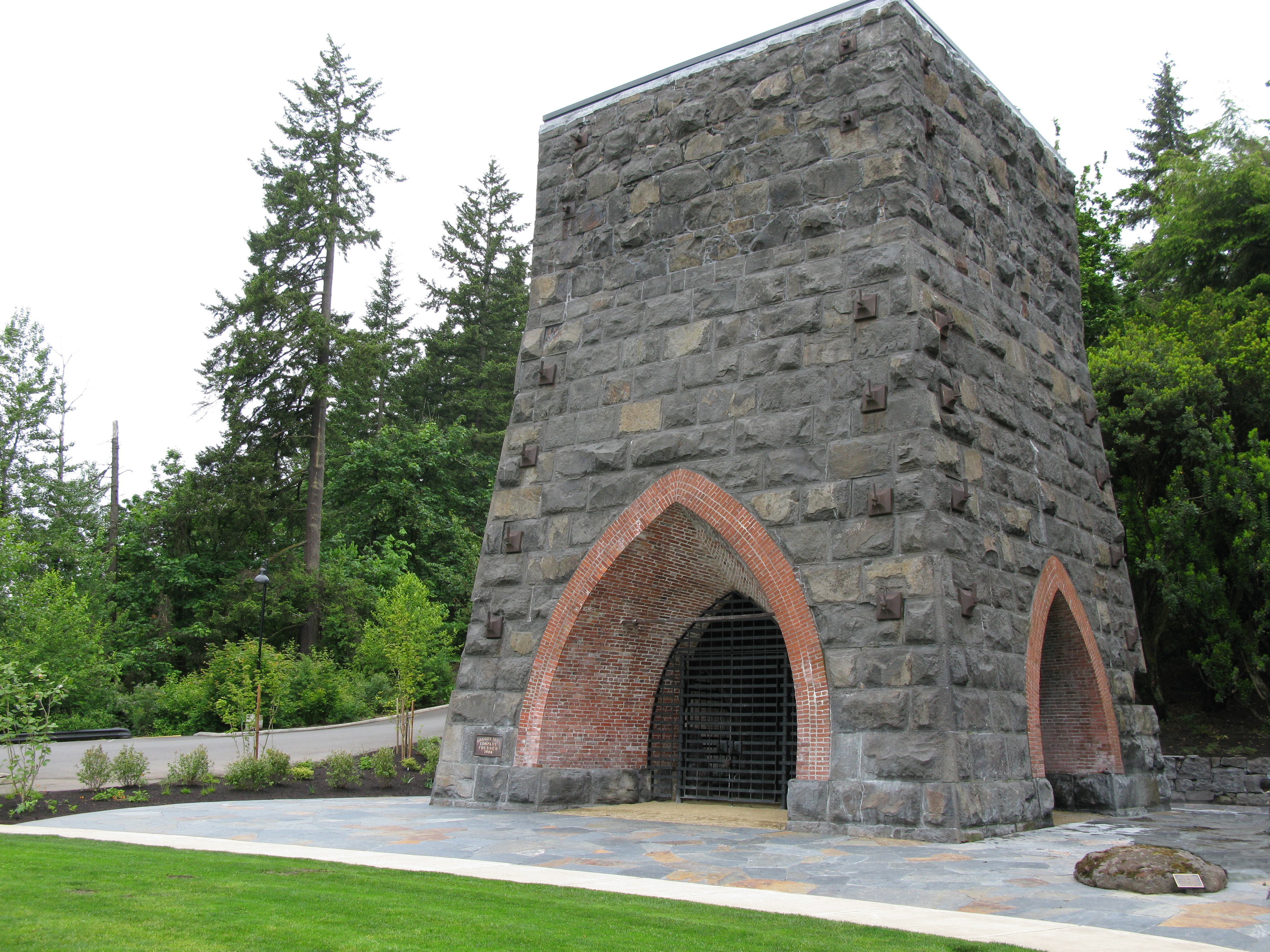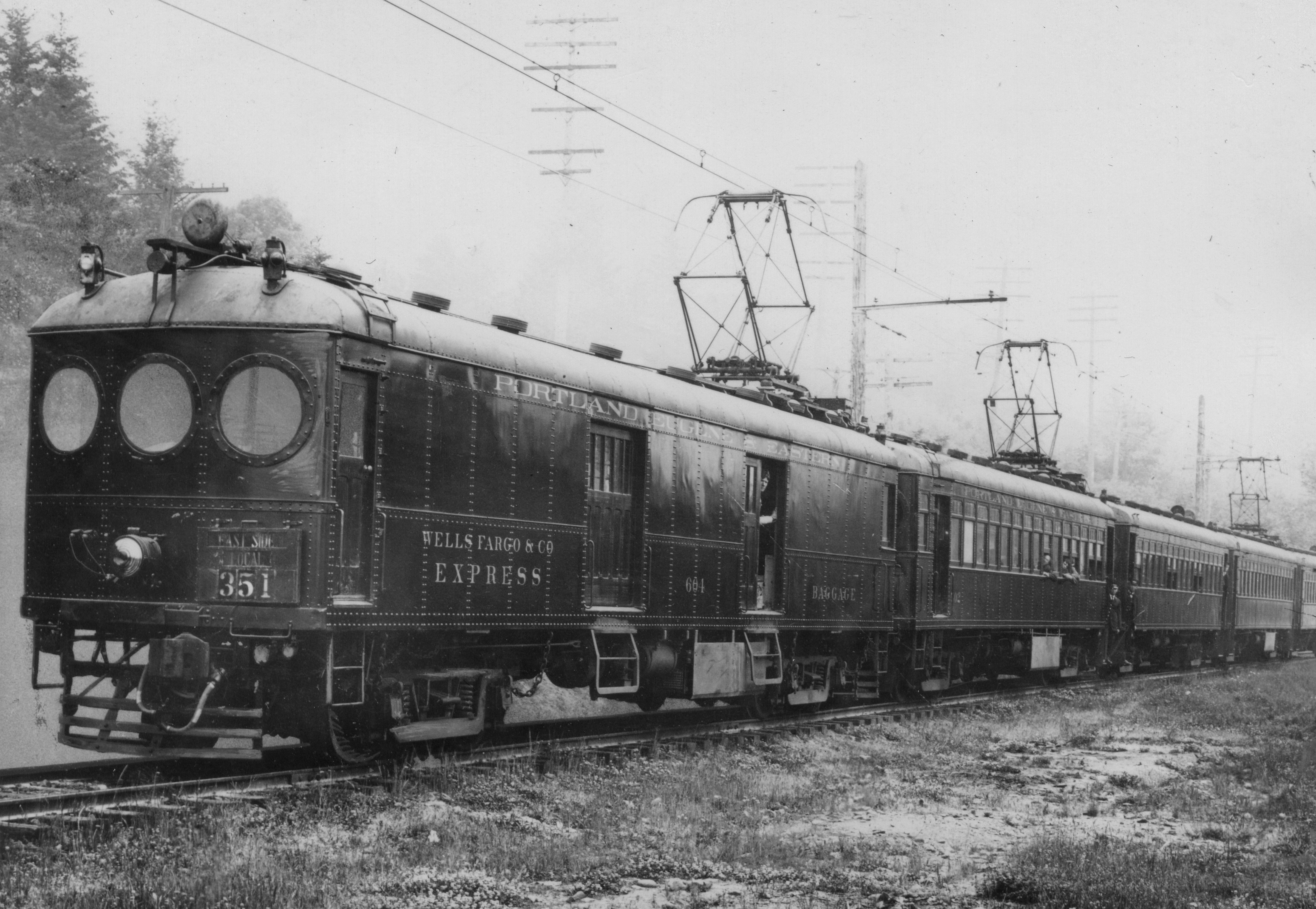Lake Oswego is a suburban city located eight miles southwest of Portland whose main attraction and history revolves around Oswego Lake. The city's location is one of the oldest inhabited areas in the Willamette Valley, occupied by prehistoric people for more than 6100 years. Before Euroamerican contact, the Clowewallas, Tualatins, and other Native bands used the area extensively. Because its waters were the home of wild swans, some Native people called the lake "waluga," a word meaning swan. For success in hunting and warfare, Native men dipped their arrows in the water that pooled in the pits of the Willamette Meteorite, one of the largest meteorites to land in the United States. Pioneers later named the lake and creek that flowed out of it "Sucker" after the fish they caught so easily there.
The town was founded in 1850 and originally called Oswego. Attracted by the creek with its swiftly flowing water and access to the Willamette River, Miranda and Alonzo Durham established a donation land claim in 1850, built a sawmill, and platted the town. Originally from New York, the settlers named the town after one in their home state. "Oswego" derived from the Iroquois phrase "on ti ahan toque," meaning "where the valley widens" or "flowing out." The Durhams entered Oswego in the mid-nineteenth century race for dominance being fought by Willamette River towns.
Although Oswego lost the battle to become the commercial center of the Willamette Valley, it became Oregon's first iron town. The iron in the ground and the trees that grew on top of it made Oswego a fine place for a charcoal iron industry, Oregon's first major manufacturing enterprise. Chinese workers provided much of the labor. In 1867 the Oregon Iron Company built the first charcoal iron smelter on the Pacific coast. In 1882 the Oregon Iron & Steel Company, a firm with a large capital investment founded by some of the region's most powerful financiers, constructed the first of two iron furnaces. The company struggled along for more than forty years to fulfill an "iron dream" that would reap huge profits. The failure of the iron business left the Oregon Iron & Steel Company with a lake and large tract of land covered by stumps remaining after cutting trees to make charcoal.
National enthusiasm for outdoor recreation at the end of the nineteenth century created an identity for Oswego as a lake resort. After 1890 Portlanders flocked to Sucker Lake to enjoy fishing, hunting, and swimming. The Southern Pacific Railroad Company's 1914 operation of an interurban electric railroad known as the "Red Electric" made it easy for Portlanders to visit. Owners of the Oregon Iron & Steel Company's property decided to capitalize on the public's love of the "great outdoors" by subdividing their land and selling it as residential real estate at a lake resort. The company used the newest marketing techniques to attract buyers and built a park (Lake Grove Swim Park) as an outdoor salesroom. The advertising slogan "Live Where You Play" became a town motto. To enhance the real estate's image, in 1912 the landowners requested that the United States Geographic Board change the lake's name. By 1927 both the name of the lake and creek changed from "Sucker" to "Oswego."
During the 1930s the city's reputation as a suburban paradise grew. Developers, merchants, and service organizations promoted recreation as a means of attracting business and people. The Lake Oswego Water Carnival, sponsored from 1933 to 1935 by the American Legion and businesses, brought aquaplaning, a forerunner of water-skiing, and inboard motorboats to the lake. Jantzen Knitting Mills, for many years a leading maker of sportswear in the Pacific Northwest, highlighted Lake Oswego as a center for water sports to market its innovative swimsuits. The Great Depression also brought a residential building boom. Cheap costs for labor and building materials combined with the attraction of raising a family in a suburb with many recreational opportunities added homes.
After World War II the city's appeal as a family-oriented suburb increased and population expansion resulted in a name change. Growth strained city services, especially Oswego's sewer system. Only one-third of lakefront homes were in the city limits where sewers existed and those homeowners wanted sewers and city water. Some residents in the community of Lake Grove southwest of Oswego protested incorporation. To compromise, city leaders suggested combining identities and in 1960 residents selected "Lake Oswego" as the incorporated city's new name. Oswego's population and acreage nearly doubled. The lake was now entirely within city limits.
Lake Oswego continued to be one of Oregon's most desirable suburban cities. Support for a good public school system, careful management of outdoor environments and historic sites, the development of cultural events, and, above all else, its enticing lake, made Lake Oswego a place to "live where you play."
-
![The city of Lake Oswego, Alless Bridge on Carl Jantzen House grounds.]()
Carl Jantzen House grounds.
The city of Lake Oswego, Alless Bridge on Carl Jantzen House grounds. Visual Resources Coll., Architecture & Allied Arts Lib., Univ. of Oreg., 726 AmO OS9 4J-1 17; 91-1274
-
Oswego Iron Works.
Oreg. Hist. Soc. Research Lib.
Related Entries
-
![Burnett Site (Lake Oswego)]()
Burnett Site (Lake Oswego)
The Burnett Site (35CL96), located on a terrace above the Willamette Ri…
-
![Jantzen]()
Jantzen
The history of Jantzen is in many ways the history of swimwear. In 1910…
-
![Oregon Iron & Steel Company]()
Oregon Iron & Steel Company
The Oregon Iron & Steel Company (OI&S;) was incorporated in the town of…
-
![Oswego Iron Furnace]()
Oswego Iron Furnace
The Oswego Iron Furnace, built in 1866 at the confluence of Oswego Cree…
-
![Southern Pacific Red Electric Lines]()
Southern Pacific Red Electric Lines
Oregon gained a distinction in 1912 when the Southern Pacific Railroad …
Related Historical Records
Map This on the Oregon History WayFinder
The Oregon History Wayfinder is an interactive map that identifies significant places, people, and events in Oregon history.
Further Reading
Atlas of Oregon Lakes. Online version. https://aol.research.pdx.edu/
Fulton, Ann. Iron, Wood & Water. San Antonio: Historical Publishing Network, 2002.
Goodall, Mary. Oregon's Iron Dream. Portland, Oregon: Binfords & Mort, 1958.
Johnson, Daniel M. Atlas of Oregon Lakes. Corvallis, Or.: Oregon State University Press, 1985.
Lake Oswego Volunteers, eds. In Their Own Words. Lake Oswego, Oregon: City of Lake Oswego, 1976.

